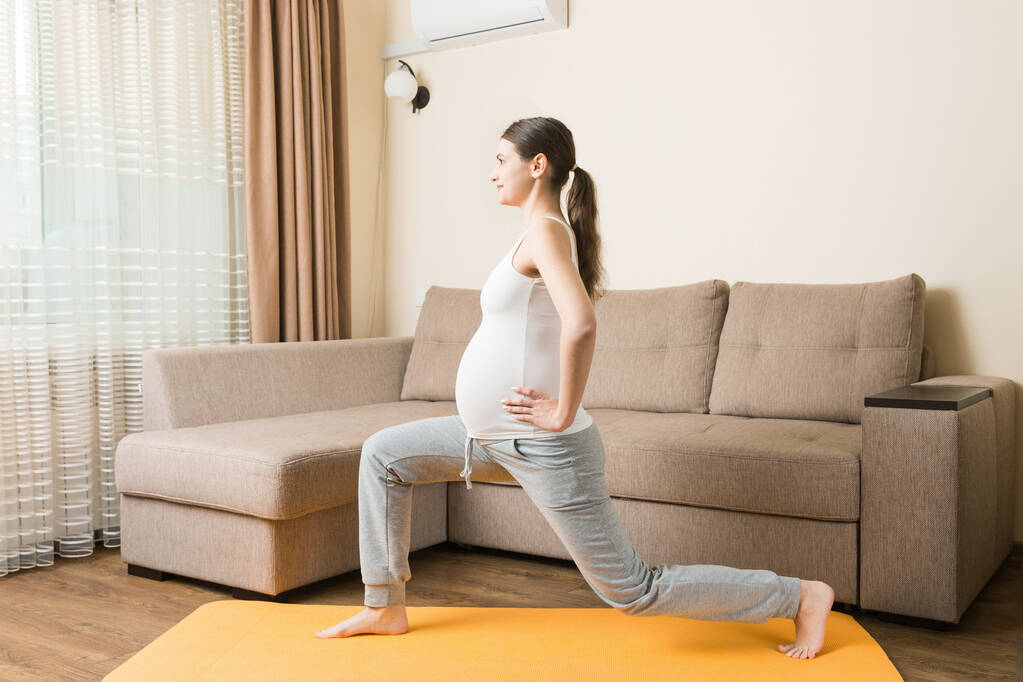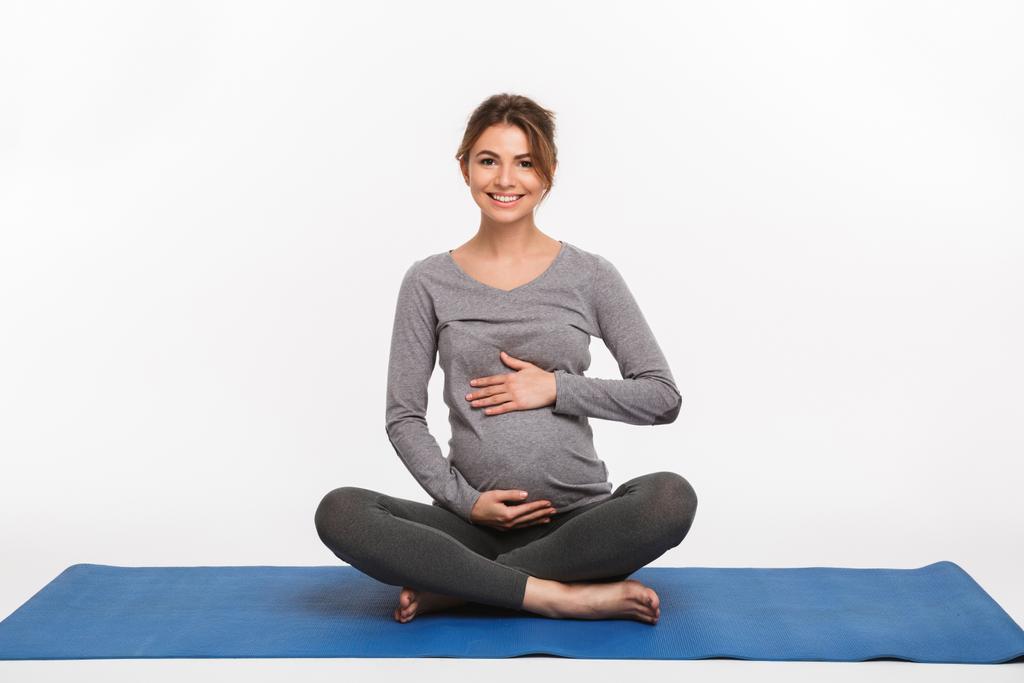Discover the optimal frequency for practicing yoga to alleviate back pain and achieve maximum relief.
How Often Should I Practice Yoga for Maximum Back Pain Relief?
Are you tired of constantly feeling the nagging discomfort of back pain? Well, guess what – it might be time to give yoga a try! With its countless benefits for both the body and mind, yoga has become a popular practice for relieving back pain. But how often should you unroll that trusty yoga mat to reap the maximum pain-relieving benefits? Don’t fret, my friend! In this article, we’ll delve into the fascinating world of yoga and help you determine the ideal frequency for your practice.

Understanding the Connection Between Yoga and Back Pain
Ah, the wonders of yoga! Before we dive into the ideal practice frequency, let’s take a moment to understand why yoga is such a powerful tool for combating back pain. Science, my friend – that’s where the magic lies.
The Science Behind Yoga and Pain Relief
Recent studies have shown that yoga can do wonders when it comes to managing back pain. It promotes flexibility, strengthens your core muscles, improves posture, and increases blood flow to the injured areas, all of which work in harmony to alleviate that pesky discomfort.
But let’s delve a little deeper into the science, shall we? When you practice yoga, your body releases endorphins, which are natural painkillers. These endorphins not only help reduce the perception of pain but also create a sense of well-being and relaxation. Additionally, yoga helps regulate the production of cortisol, a stress hormone that can contribute to chronic pain. By reducing cortisol levels, yoga helps to calm the nervous system and promote a state of relaxation, further aiding in pain relief.
How Yoga Poses Benefit Your Back
Picture rolling out your mat and twisting into a Yoga Cobra pose like a graceful serpent. Ah, majestic! Yoga poses specifically target the muscles in your back, including your spine, hips, and shoulders. By gently stretching and strengthening these muscles, yoga promotes proper alignment and reduces the strain that often leads to back pain.
But what exactly happens when you strike a pose? Let’s take a closer look. When you perform a yoga pose, such as the Cobra pose, it engages the muscles in your back, particularly the erector spinae muscles that run along your spine. These muscles help to extend and stabilize your spine, improving its overall strength and flexibility. As you hold the pose, you may also feel a gentle stretch in your hip flexors and shoulders, which helps to relieve tension and tightness in those areas.
Furthermore, certain yoga poses, like the Child’s Pose, gently decompress the spine, relieving pressure on the intervertebral discs. This decompression allows for increased space between the vertebrae, reducing the risk of nerve impingement and associated back pain.
It’s important to note that yoga is not a one-size-fits-all solution. Different poses target different areas of the back, and it’s essential to listen to your body and practice within your limits. Consulting with a qualified yoga instructor or healthcare professional can help you determine which poses are best suited for your specific back pain concerns.
Determining Your Yoga Frequency for Back Pain Relief
Now that you’re well-versed in the wonders of yoga, it’s time to determine how often you should sprinkle this magical practice into your days to achieve maximum back pain relief.
Yoga has been used for centuries as a holistic approach to healing and maintaining a healthy mind and body. It combines physical postures, breathing exercises, and meditation to promote flexibility, strength, and relaxation. When it comes to back pain relief, yoga can be a powerful tool in your arsenal.
Factors Influencing Your Yoga Practice Frequency
Before you put on your yoga pants and dive into a headstand frenzy, take a moment to consider a few key factors that can influence the frequency of your yoga practice. These factors include the severity of your back pain, your overall fitness level, and your previous yoga experience. Remember, every yogi is unique!
If you’re experiencing mild back pain, incorporating yoga into your routine two to three times per week can work like magic. This frequency allows your body to reap the benefits of the practice without overwhelming your muscles and joints. It gives you the opportunity to gradually build strength and flexibility, which can help alleviate back pain over time.
For those with moderate to severe back pain, a slightly more frequent yoga practice may be necessary. Consider practicing yoga three to five times per week, focusing on gentle stretches and poses that target the specific areas of your back that are causing discomfort. This increased frequency can provide more consistent relief and help prevent further injury.
Ideal Yoga Practice Frequency for Different Pain Levels
So, how often should you strike a yoga pose to tackle that pesky back pain? The answer lies within the realm of customization. It’s important to listen to your body and adjust your practice accordingly. Consulting with a qualified yoga instructor or healthcare professional can also provide valuable guidance tailored to your specific needs.
For warriors fighting chronic back pain, a daily yoga practice might just be the secret spell you’ve been searching for. Daily practice allows for a deeper exploration of the mind-body connection, helping you develop a greater awareness of your body’s limitations and strengths. It can also provide a sense of routine and stability, which can be especially beneficial for those living with chronic pain.
Remember, the key to finding the ideal yoga practice frequency for back pain relief is to strike a balance between consistency and self-care. Pushing yourself too hard can lead to further injury, while not practicing enough may limit the potential benefits. With patience, perseverance, and a mindful approach, you can find the perfect frequency that works for you.
Incorporating Yoga into Your Daily Routine
Now that you have a better idea of how often you should practice yoga, let’s explore some tips on incorporating it into your daily routine. After all, consistency is key!
Tips for Making Yoga a Habit
First things first, my friend – make yoga a habit. Choose specific times during the day when you can dedicate yourself to this blissful practice. Whether it’s early morning, during lunch breaks, or before hitting the hay, find a routine that fits seamlessly into your lifestyle. Consistency will skyrocket your progress!
But what if you’re not a morning person? No worries! You can still make yoga a part of your daily routine. Consider starting with just a few minutes of gentle stretching and breathing exercises in the morning to wake up your body and mind. As the day progresses, find pockets of time to squeeze in more yoga poses and sequences. Maybe during your lunch break, you can roll out your mat and do a quick flow to rejuvenate your energy for the rest of the day. And in the evening, wind down with some restorative poses to release tension and prepare your body for a peaceful night’s sleep.
Balancing Yoga with Other Physical Activities
Now, don’t let yoga hog the spotlight completely! While it’s fantastic for your back pain, it’s essential to strike a balance between yoga and other physical activities. Mix it up – go for a swim, lift some weights, or take a leisurely stroll in the park. Variety keeps the body and mind engaged, preventing boredom and ensuring optimal results.
When incorporating other physical activities into your routine, consider how they complement your yoga practice. For example, swimming can be a great way to cool down and stretch your muscles after a vigorous yoga session. Weightlifting can help build strength and stability, which can enhance your yoga poses. And a leisurely stroll in the park can be a wonderful opportunity to practice mindfulness and connect with nature, enhancing the overall benefits of your yoga practice.
Remember, the key is to listen to your body and find a balance that works for you. Some days, you may feel more inclined to focus on yoga, while other days you may crave a different form of movement. By incorporating a variety of physical activities into your routine, you’ll not only keep your body strong and flexible but also maintain a sense of excitement and motivation for your overall fitness journey.
Safety Precautions for Yoga Practice
Welcome to the world of yoga, where the mind, body, and soul unite in harmony. Before you embark on your journey to becoming a yoga master, let’s delve into the realm of safety precautions, my cautious friend. We want to ensure that you stay safe and injury-free throughout your practice, allowing you to fully immerse yourself in the transformative power of yoga.
Avoiding Injury During Yoga Practice
Yoga is not just about striking impressive poses or contorting your body into unimaginable shapes. It is about finding your flow and moving with your body’s limits, honoring and respecting its unique capabilities. Remember, yoga is not a competition in a flexibility contest, but rather a personal journey of self-discovery and self-care.
As you embark on your yoga practice, it is crucial to listen to your body’s signals and embrace modifications when necessary. Pushing yourself too far beyond your comfort zone can lead to unnecessary strain and potential injury. Be gentle, my friend, and allow your body to guide you through each asana. By doing so, you will not only prevent injuries but also cultivate a deeper sense of self-awareness and self-compassion.
When to Seek Professional Advice
Yoga has been known to work wonders for relieving back pain and promoting overall well-being. However, there may be instances when it’s best to seek professional advice to ensure your safety and optimize your practice.
If you experience any discomfort or pain during your yoga sessions, it is essential to pay attention to your body’s signals. While some muscle soreness is normal, persistent or worsening pain should not be ignored. In such cases, it is wise to consult a healthcare provider or a certified yoga instructor who can provide expert guidance tailored to your specific needs.
Furthermore, if you have any pre-existing health conditions or concerns, it is advisable to seek professional advice before diving into a new yoga practice. Your healthcare provider or yoga instructor can help you modify certain poses or suggest alternative practices that align with your unique circumstances, ensuring a safe and enjoyable journey towards pain-free living.
Remember, my friend, safety is the foundation upon which your yoga practice thrives. By embracing these safety precautions, you are not only protecting yourself from potential injuries but also nurturing a lifelong relationship with yoga that is rooted in mindfulness, self-care, and holistic well-being.

Measuring the Effectiveness of Your Yoga Practice
You’ve persevered, my yoga enthusiast! But how do you know if your practice is truly working its magic? Let’s dive into the signs that your yoga practice is helping your back pain and how you can adjust your routine for even better results.
Signs Your Yoga Practice is Helping Your Back Pain
Ah, the sweet taste of progress! If you notice increased flexibility, reduced pain intensity, improved posture, and a general sense of well-being, consider yourself a yoga superstar. These signs are a testament to the effectiveness of your yoga practice.
Adjusting Your Yoga Routine for Better Results
Feeling like you’ve hit a plateau in your practice? It might be time to spice things up! Explore different yoga styles, experiment with new poses, or challenge yourself with longer practice sessions. The beauty of yoga lies in its versatility – there’s always something new to discover!
So, dear reader, now that you’re armed with all this knowledge, it’s time to unroll that yoga mat and embark on your journey to maximum back pain relief. Remember, everyone’s journey is unique, so find the frequency that works best for you and embrace the joy that yoga brings. Here’s to a pain-free and blissful future! Namaste!



